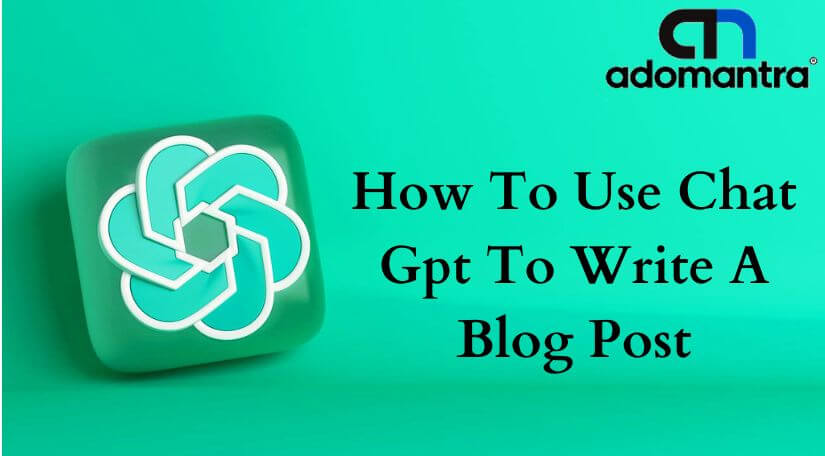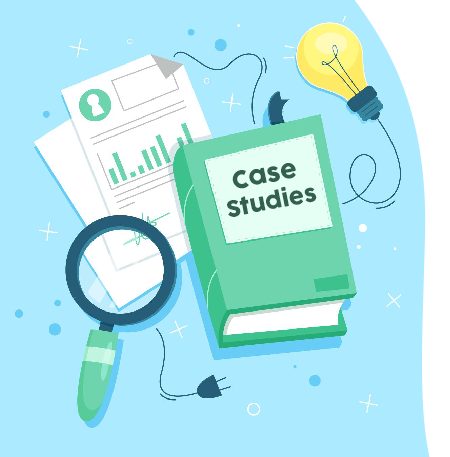
How To Use Chat Gpt To Write A Blog Post
Introduction
The advent of artificial intelligence and machine learning has revolutionized various industries, including content creation. Among the cutting-edge technologies leading this transformation is OpenAI's ChatGPT, a versatile and powerful language model capable of generating coherent, contextually relevant text. For bloggers, writers, and content creators, ChatGPT presents a remarkable tool that can aid in generating ideas, structuring content, and even writing complete blog posts. By harnessing the power of ChatGPT, the creative process can become more streamlined and efficient, allowing writers to focus on innovation and personal expression. This guide aims to explore how ChatGPT can be utilized to write a blog post, outlining the steps and methods to optimize this AI tool for content creation. Whether you are a seasoned writer or a novice exploring the blogging world, the integration of ChatGPT into your writing process could open new possibilities and elevate your craft.
Looking for a digital marketing agency that stands out? Our innovative solutions combine creativity, technology, and data-driven strategies to elevate your brand's online presence. As a leading digital marketing agency, we offer tailored services to meet your unique needs, ensuring growth and success in today's competitive digital landscape.
Understanding Chat GPT
ChatGPT, developed by OpenAI, is a state-of-the-art language model that has been trained on a vast corpus of text data, allowing it to generate human-like text based on given prompts. The underlying architecture enables it to understand and replicate intricate patterns of human language, making it an invaluable tool for various applications, including content writing. By utilizing deep learning techniques, ChatGPT can mimic human thought processes in textual form, creating coherent and contextually relevant content. For bloggers and writers, understanding ChatGPT means tapping into a powerful creative ally that can assist in brainstorming, drafting, and refining their written works.
- Explanation of what Chat GPT is and how it works: ChatGPT is a language model by OpenAI that uses machine learning to generate human-like text. It processes input prompts and produces relevant, coherent responses, leveraging its training on vast text data to mimic human language patterns.
- Overview of OpenAI's GPT-3.5 architecture: GPT-3.5, developed by OpenAI, is an advanced version of the Generative Pre-trained Transformer models. It consists of multiple layers of transformer architecture that enable better understanding and prediction of textual sequences, making it a prominent tool in natural language processing tasks.
- Key features and capabilities of Chat GPT in generating text: ChatGPT's key features include the ability to generate contextually relevant text, understand nuanced prompts, and create content that resembles human writing. Its capabilities extend to various applications like writing assistance, creative storytelling, and technical writing, making it a versatile tool for both professional and personal use.
Benefits of Using Chat GPT for Blog Writing
The utilization of ChatGPT for blog writing offers numerous benefits that can significantly enhance the creative process. Its ability to generate human-like text provides an invaluable aid in brainstorming, outlining, and even crafting entire sections of content. The model's adaptability to various writing styles and tones enables personalized and engaging writing, aligning with different audience preferences. Furthermore, ChatGPT's efficiency in generating text can save time, allowing writers to focus more on refining ideas and exploring innovative approaches. For bloggers looking to elevate their content quality and streamline their writing workflow, ChatGPT presents a cutting-edge tool that brings creativity and technology together.
- Time-saving advantages and efficiency in content creation: ChatGPT's swift text generation capabilities enable content creators to save time, offering an efficient way to draft ideas and outline articles. This time-saving advantage allows writers to focus on more intricate aspects of their work, like research and refinement, thereby streamlining the overall content creation process.
- Enhancing creativity and overcoming writer's block: ChatGPT can be a valuable ally in overcoming writer's block by generating creative ideas and suggestions. Its ability to produce diverse and imaginative content can inspire writers and help them break through creative barriers, thus enhancing overall creativity and leading to more innovative and engaging blog posts.
- Versatility in generating content for various topics and industries: The versatility of ChatGPT lies in its ability to generate content across a wide range of topics and industries. Whether it's technology, art, business, or leisure, ChatGPT can adapt to different subjects and writing styles, offering a flexible tool for bloggers to create tailored content that resonates with various audiences.
Steps to Utilize Chat GPT for Writing a Blog Post
Utilizing ChatGPT for writing a blog post involves a systematic approach that can be broken down into several steps. First, defining the topic and target audience helps in tailoring the content. Next, using ChatGPT for brainstorming ideas and outlining the structure can set the foundation. Writers can then input specific prompts to generate detailed paragraphs or sections, aligning with the chosen style and tone. Finally, it's essential to review and revise the generated content to ensure it meets quality standards and retains a personal touch. By integrating ChatGPT into the writing process strategically, bloggers can harness its capabilities to enhance creativity, efficiency, and quality in their work.
- Accessing Chat GPT platforms and tools: To start using ChatGPT for blog writing, one must access platforms that offer the AI model, such as OpenAI's API. This involves signing up and complying with terms of use, allowing access to tools that enable text generation and other language processing functions tailored for content creation.
- Formulating clear instructions and prompts for better results: Success with ChatGPT relies heavily on formulating clear and precise instructions and prompts. Being specific with requirements, such as tone, style, or context, helps the model to generate more accurate and relevant text. Thoughtfully crafted prompts enhance the quality of the responses, ensuring they align with the writer's objectives.
- Understanding and fine-tuning responses from the AI model: Understanding the responses from ChatGPT involves analyzing the generated text and fine-tuning it to suit the desired outcome. This may require several iterations and adjustments to prompts or instructions. Tailoring the AI's output ensures that the content not only meets quality standards but also retains authenticity and relevance.
Tips for Improving Blog Post Quality with Chat GPT
Improving blog post quality with ChatGPT involves a mix of understanding the tool's capabilities and aligning them with your writing goals. First, spending time to experiment with various prompts and instructions can help in finding what resonates with your style. Second, combining AI-generated content with personal insights ensures authenticity, balancing technology with human touch. Using ChatGPT for drafting and leaving final revisions to human judgment can create well-rounded content. Additionally, considering ethical guidelines and avoiding over-reliance on the AI ensures responsible use. Overall, a strategic blend of AI capabilities with human creativity, ethical considerations, and iterative refining can significantly enhance blog post quality using ChatGPT.
- Editing and refining AI-generated content: AI-generated content should be treated as a draft that needs human editing and refinement. Careful review and alterations ensure the content aligns with quality standards, grammatical accuracy, and coherence. This step is vital in transforming raw AI outputs into polished, reader-friendly blog posts.
- Incorporating personal voice and style to maintain authenticity: While ChatGPT can mimic various writing styles, incorporating your personal voice ensures authenticity. Blending AI-generated content with your unique insights and perspectives maintains a human touch, making the content relatable and engaging, and keeping it from sounding overly robotic or generic.
- Avoiding plagiarism and ensuring originality: Using ChatGPT responsibly requires vigilance against potential plagiarism. Though AI-generated, content must still be original and not replicate existing works. Utilizing plagiarism checkers and crafting unique prompts helps in maintaining originality and ethical integrity, essential aspects of professional and authentic blog writing.
Ensuring Ethical and Responsible Use of Chat GPT
Ensuring ethical and responsible use of ChatGPT in blog writing is paramount to maintain integrity and credibility. This involves understanding the potential biases in the AI model and consciously working to avoid them in the generated content. Adherence to copyright laws and intellectual property rights is also essential, meaning that using the AI to reproduce or plagiarize existing works is strictly prohibited. Transparency with readers, such as providing a disclaimer when AI is used in content creation, fosters trust and ethical engagement. Finally, understanding and complying with the terms and conditions of the platform providing access to ChatGPT ensures lawful utilization of this powerful technology.
- Understanding potential biases in AI-generated content: AI models like ChatGPT might inadvertently introduce biases present in their training data. Recognizing and correcting these biases ensures that the content remains fair and unbiased. Writers must be mindful of potential slants in language or subject matter and actively work to present balanced, objective content.
- Fact-checking and verifying information from AI responses: While ChatGPT can generate information based on extensive training data, fact-checking is essential. Verification of AI-generated information through reliable sources ensures accuracy and credibility. Writers must validate facts, statistics, and references, as AI models might produce outdated or incorrect information, to maintain the integrity of the blog post.
- Maintaining transparency when using AI-generated content in blog posts: Transparency is key when integrating AI-generated content into blog writing. Providing clear acknowledgment or a disclaimer about the use of AI tools like ChatGPT fosters trust and ethical engagement with readers. It ensures that audiences are aware of the methodology behind the content creation, enhancing the blog's credibility.
Limitations and Challenges of Chat GPT in Blog Writing
ChatGPT, while a powerful tool for blog writing, does come with certain limitations and challenges. The model's responses can sometimes lack depth or specific insights, given that it doesn't have access to real-time data or personal experiences. The potential biases in training data might inadvertently reflect in the generated content, requiring careful review. Additionally, over-reliance on ChatGPT might diminish the unique voice and creativity of the writer, making the content feel impersonal. Ensuring ethical usage and originality might also pose challenges. Despite its incredible capabilities, using ChatGPT in blog writing requires a thoughtful approach and awareness of these limitations to create effective and authentic content.
- Discussing possible inaccuracies and errors: ChatGPT may produce inaccuracies and errors in generated text, especially when dealing with highly specific or rapidly changing information. Such inaccuracies necessitate careful review and fact-checking to ensure that the content aligns with the current and accurate state of knowledge, reinforcing the importance of human oversight.
- Recognizing AI-generated content limitations in complex topics: When addressing highly complex or specialized topics, ChatGPT may lack the nuanced understanding that an expert in the field possesses. These limitations require writers to supplement AI-generated content with in-depth research and expert insights, ensuring that the content accurately represents the complexity and specificity of the subject matter.
- Addressing potential issues with context and coherence: While generally adept at maintaining context and coherence, ChatGPT might sometimes generate content that loses thread or alignment with the overall theme. Writers need to review and edit such content, ensuring that it fits seamlessly into the blog's structure and maintains logical flow, consistency, and contextual relevance.
Integrating Chat GPT with Human Writing
Integrating ChatGPT with human writing creates a synergistic relationship that enhances the content creation process. ChatGPT can be employed for brainstorming, drafting, and generating creative ideas, while human intervention ensures the nuances, authenticity, and ethical considerations are in place. This combination enables writers to explore new avenues of creativity without losing personal touch or quality. Humans can provide what AI lacks – empathy, cultural understanding, and real-time insights – while ChatGPT brings efficiency, versatility, and data-driven suggestions. The blend of technology with human intellect fosters a dynamic approach to blog writing, leveraging the strengths of both to craft content that is engaging, relevant, and resonant with readers.
- Blending AI-generated content with human-written sections: Blending AI-generated content with human-written sections allows for a combination of efficiency and authenticity. ChatGPT can quickly produce drafts and ideas, while human intervention ensures alignment with voice, style, and context. This integration results in content that retains the writer's uniqueness while benefiting from AI's capabilities.
- Harnessing the synergy of AI and human creativity for impactful blog posts: The synergy between AI and human creativity unlocks new possibilities in blog writing. While AI offers data-driven insights and rapid content generation, human creativity adds emotion, nuance, and ethical considerations. This collaboration results in impactful blog posts that resonate with readers, combining the best of technology and human intellect.
- Finding the right balance in content collaboration: Finding the right balance between AI-generated and human-crafted content is key to successful collaboration. Too much reliance on AI may lead to loss of authenticity, while complete human effort may limit efficiency. Striking the optimal balance ensures that the content is engaging, original, and crafted with a thoughtful approach.
Conclusion
In this blog, we explored how to effectively use Chat GPT to write a compelling blog post. AI language models like Chat GPT have revolutionized content creation, providing a powerful tool for writers and creators. Understanding the capabilities of Chat GPT and its underlying technology is crucial to harness its full potential.
Using Chat GPT for blog writing offers numerous benefits, such as saving time, enhancing creativity, and generating content on a wide range of topics. However, it's essential to strike a balance between AI-generated content and human writing to maintain authenticity and accuracy. While Chat GPT can be a valuable asset, it's essential to use it responsibly. Fact-checking, avoiding plagiarism, and acknowledging potential biases are critical steps to ensure ethical content creation. As AI technology continues to evolve, integrating Chat GPT with human writing can lead to even more impactful and innovative blog posts. By embracing AI language models responsibly, writers can unlock new possibilities and create engaging content that resonates with their audience.
Ultimately, the future of content creation lies in the harmonious collaboration between human creativity and AI capabilities. Embrace the power of Chat GPT to enhance your writing journey, while remaining mindful of the potential challenges and limitations that come with AI-generated content. With the right approach, AI can become an invaluable ally in the world of blog writing, revolutionizing how we share ideas and connect with our readers.







